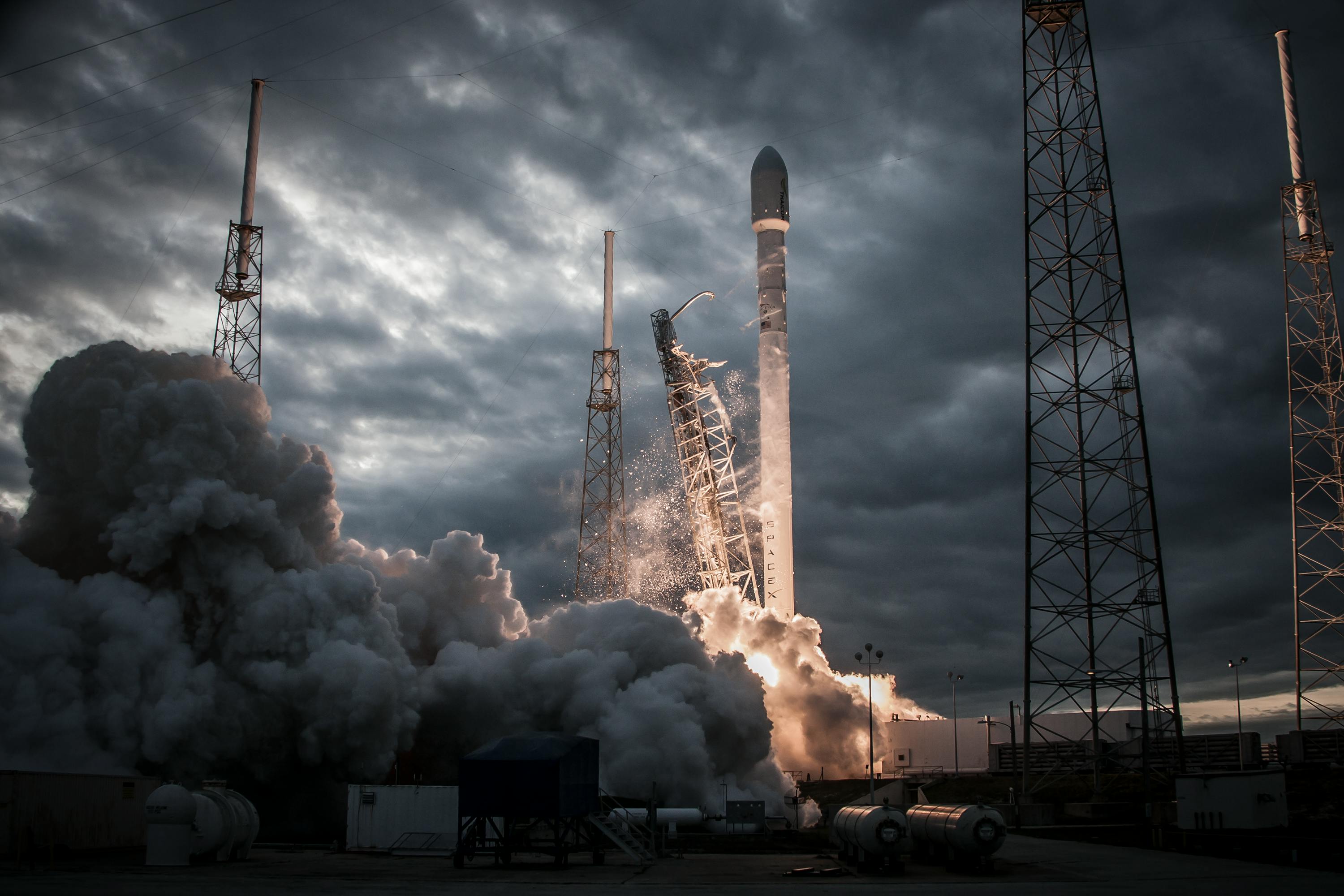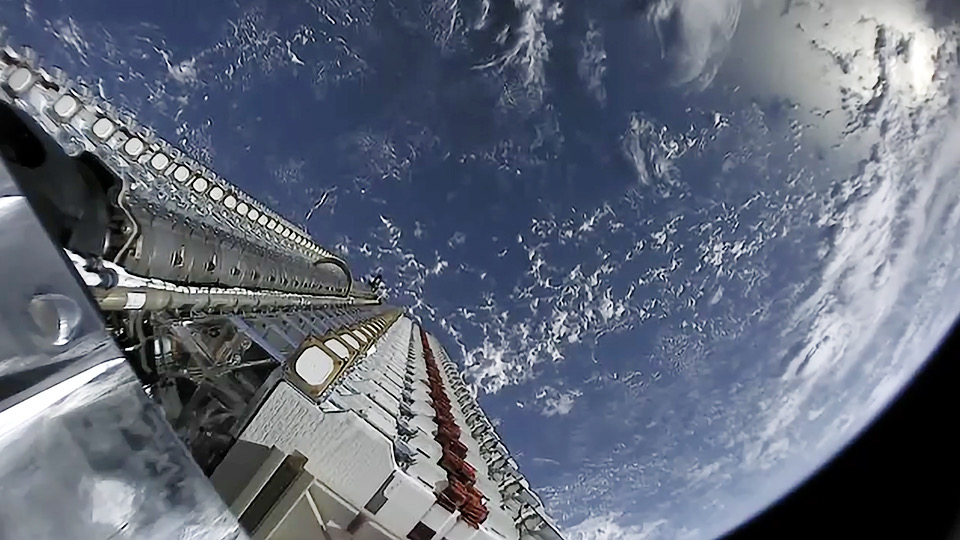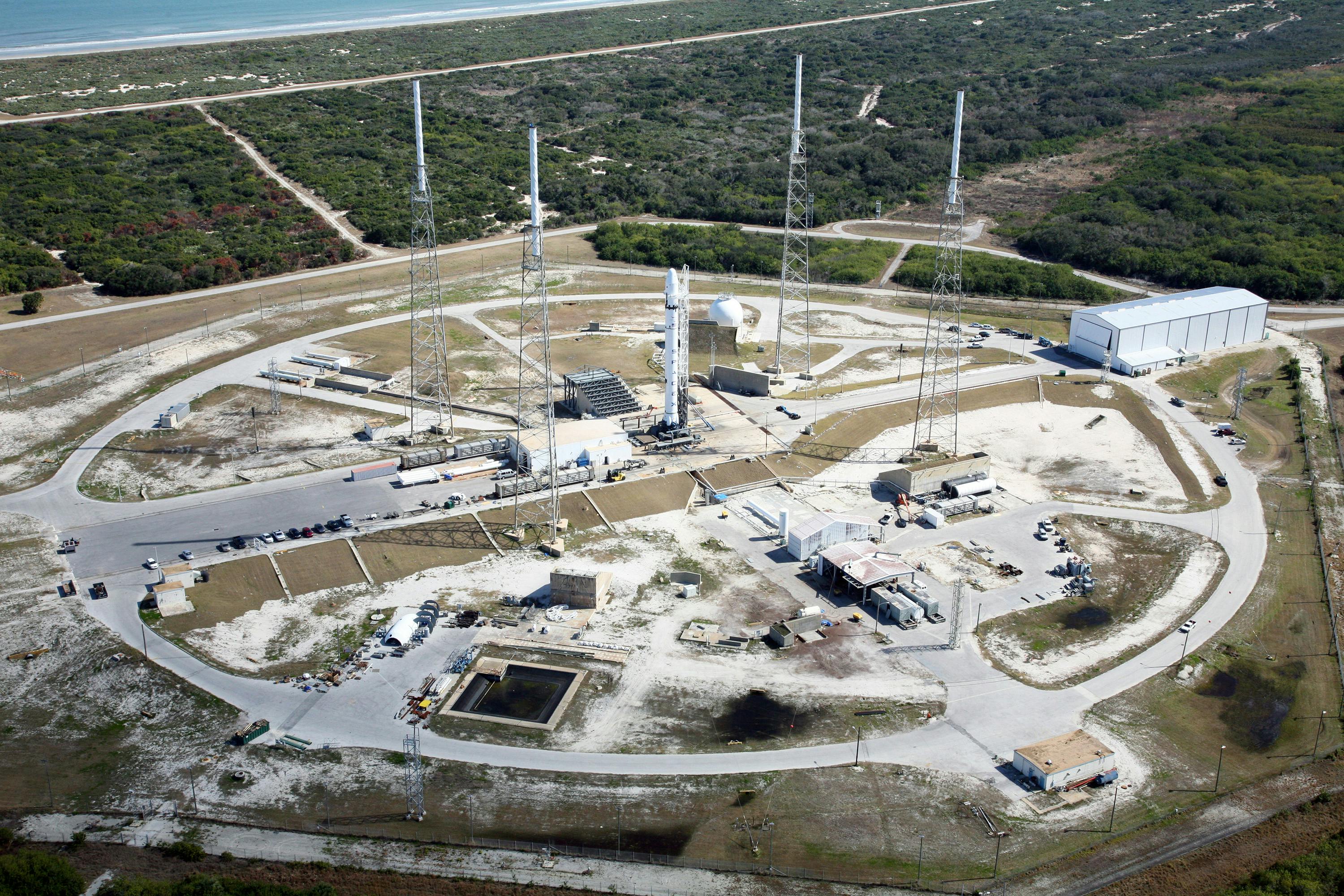· space brief · 6 min read
Space Brief 27 May 2025
Today's Space Brief highlights advances in satellite communication for defense, regulatory changes for Starlink in South Africa, SpaceX's ongoing Starlink launches, and a significant contract for a Chinese satellite constellation.

📄Top Stories
Today, we delve into the complexities of satellite-based communication systems enhancing defense capabilities, SpaceX’s continuous advancement in the Starlink program, and regulatory shifts in South Africa affecting telecommunications. Additionally, we explore a new contract for a satellite constellation in China designed for enhanced regional monitoring.
📰Detailed Coverage
Enhancing Defense Systems with Advanced Satellites
The integration of multi-orbit and multi-network systems is transforming defense communication capabilities. As traditional infrastructures become strained under increased demand, emerging satellite technologies offer a resilient backbone for critical military operations.
These sophisticated systems deliver more robust, flexible, and secure communications, crucial for modern defense needs. This development underscores the relevance of our satellite tracking application in monitoring these essential assets and their orbits.
Read the full story: SpaceNews
South Africa Relaxes Telecoms Laws for Starlink
Under pressure from SpaceX’s Starlink, South Africa plans to relax black empowerment mandates in telecommunications. This adjustment aims to facilitate Starlink’s entry, showcasing the impact of global partnerships and technological investments on policy changes.
The move follows diplomatic discussions underpinning international cooperation in tech sectors, promising broader internet access and satellite deployment in the region.
Read the full story: Africa Daily
SpaceX Expands Starlink Network with New Launch
SpaceX successfully launched 27 Starlink V2 Mini satellites from California, further bolstering its internet constellation. The launch from Vandenberg Space Force Base marks another step in SpaceX’s mission to provide global high-speed internet coverage.
As SpaceX continues to deploy more satellites, the implications for satellite density and orbital traffic management are significant, reflecting the increasing importance of satellite tracking and collision avoidance.
Read the full story: SpaceDaily
China Secures Provincial Satellite Constellation Contract
Chinese satellite manufacturer MinoSpace has secured a contract to construct a remote sensing satellite constellation for Sichuan Province. This project emphasizes regional enhancements in monitoring and data gathering, crucial for environmental and security applications.
The contract highlights the rise of commercial satellite endeavors within China, contributing to the growing landscape of Earth observation capabilities.
Read the full story: SpaceNews
Petition Against NASA’s Budget Cuts
The Planetary Society has initiated a petition to counter a proposed 47% budget cut to NASA’s science programs by the White House. Advocates aim to gather 5,000 signatures to influence congressional decision-making, reflecting public commitment to maintaining robust space science funding.
This initiative underscores the significant public interest in safeguarding scientific exploration and technological advancement, championing the role of space research in addressing global challenges.
Read the full story: SpaceExplored
🛰️Satellite Spotlight
- Satellite Name: AEROCUBE 7
- NORAD ID: 40966
- Launch Date: October 8, 2015
- Mission: AEROCUBE 7 is a technology demonstration satellite designed to test various space technologies.
- Orbit: Low Earth Orbit (LEO)
- Operator: AERO
- Fun Fact: AEROCUBE 7 is a 1.5U CubeSat that features a cold gas propulsion system and two deployable solar arrays to power its instruments.
Track this satellite in real-time on our web app: Track AEROCUBE 7
🌌Space Weather
Space weather conditions are currently quiet.
R0 - S0 - G0
Next 24 Hours: No risk of radio blackouts or solar radiation storms is expected in the short term, providing a stable environment for satellite operators and ground-based radar systems. However, a G1 (Minor) geomagnetic storm is anticipated on 28 May due to the onset of a coronal hole high-speed stream (CH HSS). While no significant solar wind features are forecasted, operators should remain vigilant, as there is a slight chance of the greater than 10 MeV proton flux reaching S1 (Minor) levels between 27-29 May. Additionally, radio blackout levels may reach R1-R2 (Minor-Moderate) with a potential for isolated R3 (Strong) events during this period, which could affect communications for some satellite users.
Beyond: From 26 May to 21 June, solar activity is expected to ramp up to moderate levels (R1-R2/Minor-Moderate), particularly as Region 4098 approaches the west limb of the Sun. There remains a chance for M-class X-ray activity, which could impact satellite operations and ground-based telescopes due to increased radiation levels. During this forecast period, no proton events are expected at geosynchronous orbit; however, expect high levels of the greater than 2 MeV electron flux around 30 May - 05 Jun and 14-21 Jun due to recurrent coronal hole influences. Geomagnetic conditions are likely to remain mostly elevated, with G1 (minor) storms anticipated on 13-14 June and active conditions potentially affecting operations on several dates throughout this forecast. Quiet conditions will only occur on 08-09 June, so satellite operators and communication users should stay updated and plan accordingly.
🚀 Upcoming Space Launches
May 27
- SpaceX Falcon 9 Block 5:
- Starlink Group 17-1 from Vandenberg Space Force Base, CA, USA (16:14 UTC) A batch of 24 satellites for the Starlink mega-constellation - SpaceX’s project for space-based Internet communication system.
- SpaceX Starship:
- Flight 9 from SpaceX Starbase, TX, USA (23:30 UTC) 9th test flight of the two-stage Starship launch vehicle.
May 28
- SpaceX Falcon 9 Block 5:
- Starlink Group 10-32 from Kennedy Space Center, FL, USA (13:30 UTC) A batch of satellites for the Starlink mega-constellation - SpaceX’s project for space-based Internet communication system.
- China Aerospace Science and Technology Corporation Long March 3B/E:
- Tianwen-2 from Xichang Satellite Launch Center, People’s Republic of China (17:22 UTC) Tianwen-2 is a planned Chinese asteroid sample return and comet orbiter mission. The spacecraft will visit Near Earth asteroid 469219 Kamoʻoalewa, collecting samples and later visit the comet 311P/PANSTARRS.
May 29
- Rocket Lab Electron:
- Full Stream Ahead (BlackSky Gen-3 2) from Rocket Lab Launch Complex 1, Mahia Peninsula, New Zealand (01:15 UTC) 2nd of the BlackSky Gen-3 high-resolution Earth-imaging satellites.
- China Aerospace Science and Technology Corporation Long March 2D:
- Unknown Payload from Jiuquan Satellite Launch Center, People’s Republic of China (04:03 UTC)
May 30
- SpaceX Falcon 9 Block 5:
- GPS III SV08 from Cape Canaveral SFS, FL, USA (17:23 UTC) Eighth of ten GPS III missions.
- SpaceX Falcon 9 Block 5:
- Starlink Group 11-18 from Vandenberg Space Force Base, CA, USA (20:24 UTC) A batch of satellites for the Starlink mega-constellation - SpaceX’s project for space-based Internet communication system.
June 2
- SpaceX Falcon 9 Block 5:
- Starlink Group 12-19 from Cape Canaveral SFS, FL, USA (04:57 UTC) A batch of satellites for the Starlink mega-constellation - SpaceX’s project for space-based Internet communication system.
June 6
- SpaceX Falcon 9 Block 5:
- Sirius SXM-10 from Cape Canaveral SFS, FL, USA (00:00 UTC) SXM-10 is the 11th high-powered, digital, audio radio satellite built by Maxar for SiriusXM. It features a large mesh reflector for broadcasting to radio systems.
Note: Launch dates and times are subject to change due to technical or weather considerations.

Maurice Stellarski





